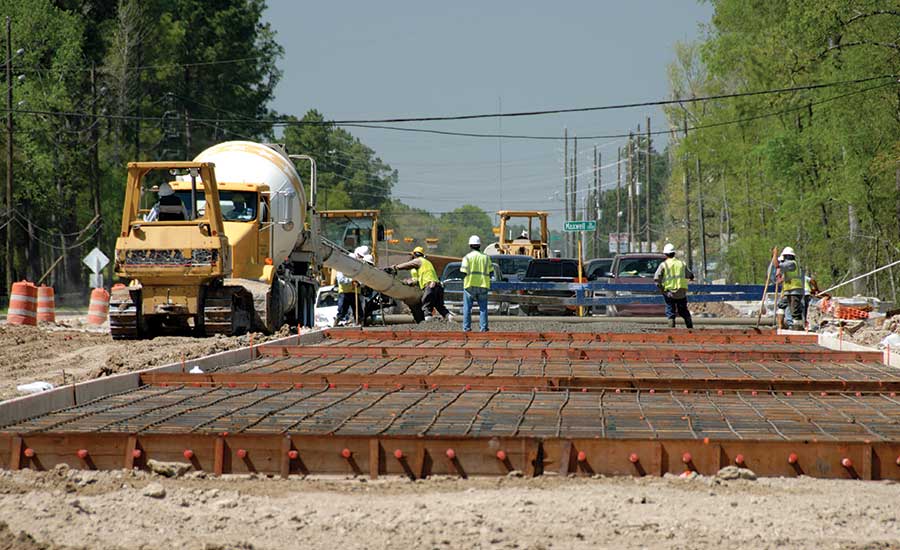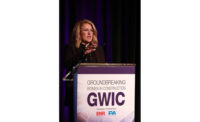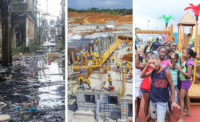The need to rebuild, repair, operate and maintain our country’s infrastructure is, and always will be, an ongoing endeavor. The problem is that minorities, women, veterans and other groups are seldom the contractors or high-wage earners on infrastructure projects.

Historically, the primary funding source for the U.S. Dept. of Transportation and its infrastructure projects is an 18.4¢-per-gallon gasoline tax and a 24.4¢-per-gallon tax on diesel fuel that millions of consumers pay at the pump. These taxes account for nearly $200 billion annually. In addition to the federal tax, states collect gasoline taxes that often are much higher, with some state rates adding as much as 57¢ per gallon to a fuel purchase. Couple these taxes with airport fees, tolls and so on, and we see that much of America’s infrastructure is supported by consumers—people who should have the right to participate in rebuilding it. The inclusion of all Americans must be a top priority for local, state and federal representatives and the companies awarded these contracts.
As financial models for these projects become more creative, including the wider use of public-private partnerships (P3s), we need to ensure that funds are being used for their intended purpose—to rebuild infrastructure—and that all Americans benefit from this funding.
The U.S. DOT’s Disadvantaged Business Enterprise (DBE) program was designed to include small business groups on federally assisted highway, transit, airport and transportation-safety projects. The program embraces the concept of engaging women, veterans and minority and small business owners in the transportation industry as contractors and skilled workers.
As such, the program provides a vehicle for increasing the participation of DBEs in state and local procurements as well. The DBE program also ensures that small, disadvantaged business enterprises have access to federally funded transportation projects. Therefore, DBE contracting opportunities must be preserved on P3s in addition to traditionally funded public projects.
States should also do their part in including small businesses by making provisions for emerging minority-, women- and veteran-owned businesses to participate in their P3 and other projects. In 2017, according to U.S. DOT reports, 23 states and two U.S. territories that received federal tax dollars for their projects did not meet annual DBE program goals.
P3s should continue to build quality projects while allowing diversity to be an integral part of the investment, planning and execution of them. Community Benefits Agreements—contracts often signed by community groups and developers that require the latter to provide specific amenities or mitigations to the local community—should be utilized more often in the planning of projects that will greatly affect local communities. Such amenities do not necessarily provide a monetary return to the developer but represent an investment in people and may offset any negative quality-of-life or environmental impacts caused by the project.
A federal standard for domestic- and international-funding partners must be established. In addition, the federal government should determine fair levels for tolls on P3 projects and precisely when the P3 return on investments will be satisfied.
Workforce Development
The U.S. DOT had a workforce development program in 2017 that was not reauthorized under the 2018 federal budget. We must rethink the loss of investment in American workers if we want to continue developing an essential workforce for future transportation projects.
The National Association of Minority Contractors (NAMC) also is concerned that America is losing a generation of minority youth because of indifference. African-American males, ages 18-35, are projected to have the highest unemployment rate in America. Other minority groups—women, veterans and disabled veterans—also have seen disparities and should be included in reestablishing workforce development programs.
The U.S. DOT has estimated that for every $1 billion in transportation infrastructure investment, 13,000 jobs will be created over the next 10 years. Transportation employers will need to hire up to 4.6 million workers, or 1.2 times the current transportation workforce, during the same period. Many workers will require skills training to meet job requirements—yet the U.S. DOT workforce development program has been cut.
The number of urban and rural communities being left out of infrastructure rebuilding is daunting. For some state agencies to award billions of dollars of work annually, with certain minority groups receiving less than 1% of those dollars, is unacceptable. Ironically, these groups still pay the 18.4¢ per gallon in federal sales tax to fund infrastructure projects.
The FAST Act authorized $4.5 billion for fiscal years 2016-2020, including $850 million for FY2017—to be awarded by the secretary of Transportation. The grants from U.S. DOT total almost $800 million.
President Trump has said he plans to add $1.5 trillion in public and private infrastructure spending toward the rebuilding of America. Additionally, the nation’s roads, dams, airports and water and electrical systems need at least $2 trillion in funding in coming years. Citizens must get involved with local leaders as well as state and congressional representatives to ensure that the needs of their communities are part of infrastructure appropriations. Ask government officials how the new infrastructure will benefit small businesses and communities and help meet minority-participation goals.





Post a comment to this article
Report Abusive Comment